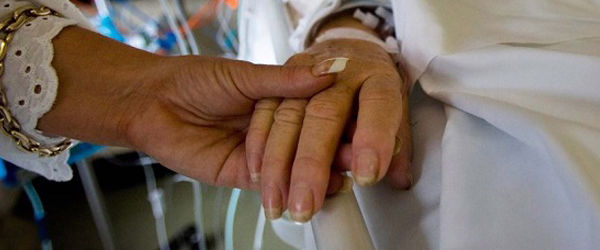As the new school year begins, I’ve been thinking about how important Catholic schools are to our nation’s future.
Here in Los Angeles, our Catholic schools are making a major contribution to the region’s social fabric and the common good. We serve 80,000 students, which makes us the third largest school system in California. Nearly 70 percent of our students are ethnic minorities. Over one-third come from families living below the poverty line. What our students are achieving is really amazing. And this story is being repeated in Catholic schools all across our country. With more than 2 million students nationwide, Catholic schools make up the nation’s largest private school system — and 15 percent of students in our schools are not Catholic. I have hoped for a long time that our politicians and civic leaders would start paying more attention to Catholic schools in their search for solutions to our nation’s education problems. Because studies over the years keep concluding that Catholic schools provide better educational outcomes at a lower cost than public schools. Nationally, we spend about $10,300 a year to educate one student in our public schools — compared to $7,000 per student in Catholic schools. And Catholic schools have higher graduation and college entrance rates and better SAT scores — especially among low-income and economically disadvantaged students. Nationally, Catholic high schools graduate 99 percent of their students; public schools graduate about 73 percent. Despite these impressive results, Catholic schools remain “conspicuously absent in the national and regional dialogues about school reform,” according to a study released over the summer by Loyola Marymount University Los Angeles’s Center for Catholic Education. The Loyola study focused on low-income students in our Archdiocesan schools served by our Catholic Education Foundation (CEF). But the study’s findings should be more widely known.
Our schools face challenges. The most serious come from the economic needs of families who can’t afford the costs of Catholic school tuition. So we need to find a way to help.
These findings suggest that to address inner-city poverty and related social issues, perhaps the most important investment we can make is to give low-income families access to quality education for their children. That’s just what CEF does. And that’s why I believe it is one of our Church’s most important social programs. In the last 24 years, the Foundation has provided 120,000 tuition awards totaling $108 million to our poorest families. Loyola found that every CEF-supported student goes on to high school and 98 percent go on to graduate high school. By contrast, the graduation rate in Los Angeles public schools is 66 percent, and 71 percent in California public schools generally. Even more impressive: 98 percent of CEF students go on to attend college — most are the first in their families to ever attend college. CEF is not a handout program. Families of CEF students make great sacrifices to pay a portion of the tuition bill. They make these sacrifices so their children can learn in an environment where gangs, drugs and bullying aren’t tolerated, and where the values of faith, family, hard work and achievement are taught. Last week I had the privilege, as CEF’s chairman, to help launch our new “legacy campaign” to encourage supporters to make provisions for CEF in their trusts and wills. The idea for the campaign came from a generous $11.3 million endowment gift from the Frank and Blanche Seaver Trust. This one gift will ensure that at least 600 students will be funded each year, in addition to the 7,300 awards that CEF already provides. And we are hoping that generous legacy gifts from others will help us to offer tuition assistance to the nearly 30,000 eligible low-income students in our schools. Our schools face challenges. The most serious come from the economic needs of families who can’t afford the costs of Catholic school tuition. So we need to find a way to help. Education remains essential to our Church’s mission. Catholic schools have given generations of immigrants and minority groups a way out of poverty and a chance to become leaders in our civic and cultural life. We need to make sure this Catholic mission of hope and uplift continues for our newest Americans and in the face of new challenges in our cities. In this great mission, all of us have a responsibility — clergy, religious, lay people. Let’s work together to grow our Catholic schools, to expand into new areas where schools are needed, and to raise the money we need to give a Catholic education to every student who wants it. Let’s keep praying for one another this week. And let us ask our Blessed Mother Mary to help us all to be generous in supporting the Church’s educational mission of teaching and proclaiming hope in the name of her Son. Follow Archbishop Gomez at: www.facebook.com/ArchbishopGomez.

